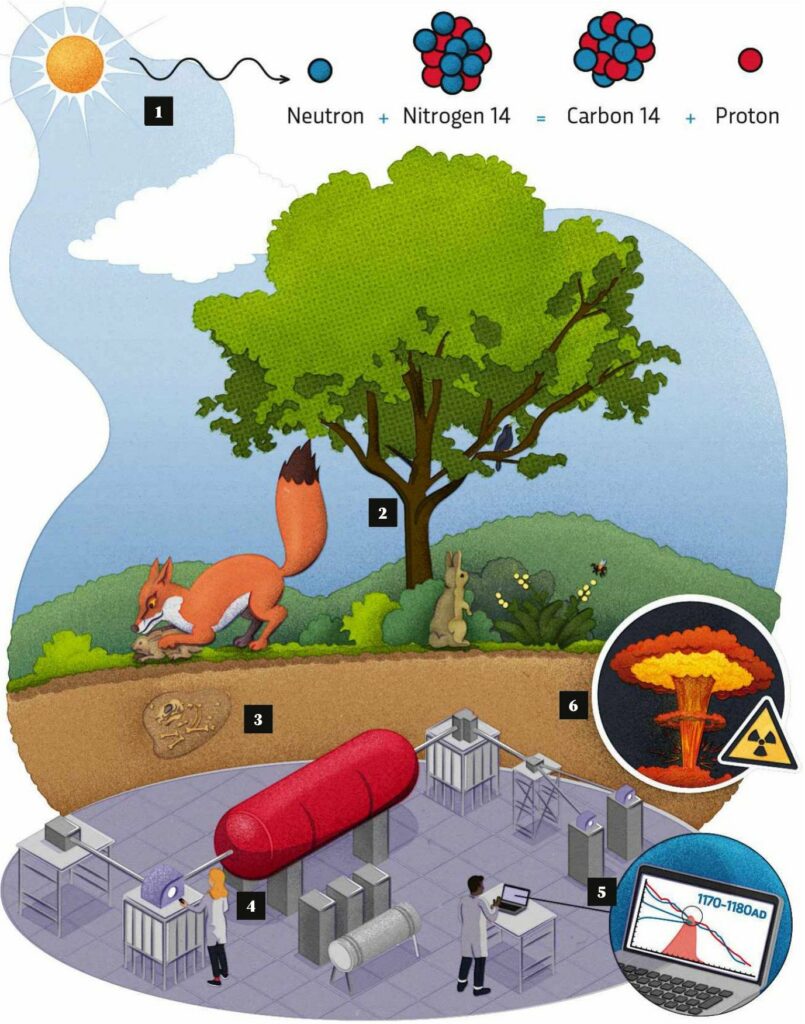HOW DOES RADIOCARBON DATING WORK?

1 High-energy cosmic rays, in the form of neutrons, strike nitrogen atoms in the upper atmosphere and convert them to the radioactive isotope of carbon, which is carbon-14 (also known as radiocarbon). This quickly oxidises to create mildly radioactive carbon dioxide. About 1.1 per cent of the carbon atoms on Earth are carbon-14.
2 Plants absorb radiocarbon, along with normal carbon dioxide, during photosynthesis and incorporate it into their tissues. Herbivores eat the plants, and carnivores eat the animals, and so the radiocarbon spreads through the food chain, eventually reaching even the deepest oceans.
3 Radiocarbon is unstable, and slowly decays back to nitrogen. The half-life of carbon-14 (the period of time after which half of a given sample will have decayed) is about 5,730 years. When a plant or animal dies, it stops absorbing new carbon, so the proportion of radiocarbon in their body gradually drops due to this radioactive decay.
4 Scientists can measure the ratio of carbon-14 to the stable isotopes carbon-12 and carbon-13 with an accelerator mass spectrometer (AMS). This uses an electric field to accelerate carbon ions past a magnet that deflects their trajectory. Carbon-14 is heavier, so is deflected less. The older the sample, the less radiocarbon is still present.
5 Radiocarbon dating is believed to be accurate to within a few decades or centuries, with lower accuracy the older the sample. Dating anything older than 50,000 years is very difficult since so little radiocarbon remains after that long, but some measurements of samples up to 75,000 years old have been made.
6 In the 1950s and 1960s, nuclear weapons tests briefly doubled the levels of radiocarbon in the atmosphere and radiocarbon dating needs to account for this to remain accurate. Conversely, burning fossil fuels since 1900 has steadily lowered the amount of radiocarbon, because coal, oil and gas are all formed from plants and animals that died millions of years ago and so have essentially no radiocarbon left. LV
Email your questions to
questions@sciencefocus.com
or submit on Twitter
@sciencefocus